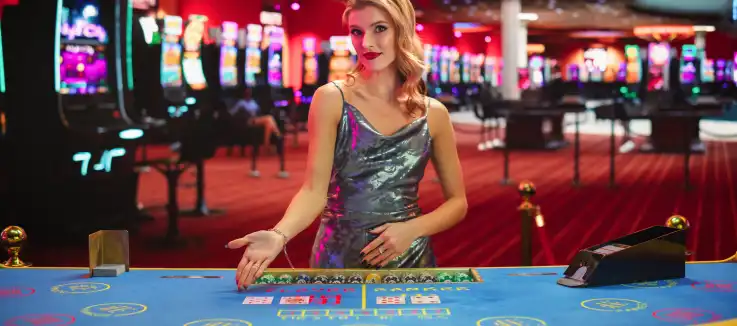3 High-Impact Strategies to Play Baccarat to Win

The roots of the game of baccarat are in Renaissance-era Italy but for many years, the game was played mainly in Asia. Asians seemed to be drawn to the intricate betting tables and elements of luck that were involved in playing baccarat. Even at SlotoCash and other modern casinos, Western gamblers seemed to prefer games like poker and blackjack over baccarat.
In recent years, this has changed as increasing numbers of American and European gamers discovered the challenge of the baccarat's wagering schedule as well as the fun of trying to summon one's luck to achieve game wins. Much of this is due to written and online guides that walk gamers through baccarat gameplay in step-by-step tutorials that make the game more accessible and more rewarding!
About Baccarat
Baccarat's history is unclear, but it's generally accepted that Felix Falguiere, an Italian, created "baccara" in the 1440s. He used the Italian word for “zero,” because in the game, all the ten cards and the face cards are worth zero. The name was adapted to a more French pronunciation when it became a popular feature in French casinos among French royalty and nobility.
Casino legend relates that Falguiere based baccara on an old Etruscan legend in which a young virgin's fate – whether she would be sacrificed to the gods or saved -- was decided by the toss of a nine-sided die. If the toss resulted in a 6 or 7, she could live but would have to remain outside the community. If the throw displayed a number lower than 6, she would be banished to the sea to drown. If an 8 or 9 appeared on the dice, the young woman would live out the rest of her life as a priestess.
In Falguiere's baccara, cards would be dealt by four separate dealers and players would take turns playing the part of the banker. Bets would be placed against the banker, against other players, or against the house.
When the game first began to be played in France in the late 1400s, it was called Chemin de Feur ("Chemmy"), then, later, "baccarat." It quickly became a favorite of the French Court – King Charles VIII and his noblemen played it incessantly. English aristocrats brought it to London and introduced it to the English Royal House, where it became a favored gambling game among the upper classes as well as Super Special Agent James Bond.
Over the years, different versions of baccarat have evolved. Vegas, Riviera and online casinos generally feature Punto Banco, where the player competes against the bank.
Basic Baccarat Play
Before you start exploring advanced baccarat strategies, take a little time to make yourself familiar with the fundamentals of baccarat gameplay.
The game pits the player against the bank. When the game opens, both the Player and the Banker receive a hand. As the Player, you will be betting on the hand that will have a total that's the closest to a 9, or on a tie.
On the deal, you'll receive 2 cards. There will be a later option to receive a third card. Tens, Jacks, Queens and Kings are valued at zero and the Ace is valued at one point. You look at your two cards and calculate the value of your cards. If the value is over 9, it's calculated as zero. So, for example, two cards, one a 7 and one an 8, will have a baccarat value of 5 instead of 15. Or, for instance, if you have taken a third card and your 3 cards total 24, the baccarat value will be 4.
Variations
American casinos generally feature the Punto Banco baccarat variation but European and Latin American casinos often feature a variation called "Chemin de Fer". That version can be played with up to 12 players who bet, one at a time, against each other instead of against the house.
A slightly different version is Baccarat Banque (also called Baccarat Banque or Baccarat à Deux) which is sometimes played privately but rarely in a land-based or online casino setting. Baccarat Banque is similar to Chemin de Fer baccarat but in this variation, the casino holds the bank.
High-Impact Strategies for Baccarat
Although baccarat is, essentially, a game of luck, there are certain strategies that you can use to optimize your bets.
In baccarat, both for you and for the banker, the numbers that the cards show are the numbers that you have to work with. While that indicates that the result of every gameplay is a matter of good fortune, the odds are good that you can win your deal if you follow optimal baccarat strategy.
- Bet on the banker. Statistically, the Banker hand has a slightly higher probability of winning as compared to the Player hand.
- Don't place Tie Bets. Tie bets are statistically riskier than Player or Banker bets. Tie Bets have the highest baccarat house edge (where the odds are in favor of the house) because the likelihood of a tie occurring is low. Tie bets are the riskiest bets over the long run.
- Money management is a fundamental element of a baccarat gaming strategy, so manage your money effectively. Establish your budget before you place your first deposit and stick to that budget, no matter what. Don't chase losses with strategies that suggest that you “double bets after losses” or do anything that will deplete your bankroll and have you continuing to place bets based on the belief that you can "win your money back." All of these "techniques" are basically strategies that will have you chasing losses. And, they never work! In short, don’t bet more than you can afford to lose.
Baccarat has a strong Return-to-Player rate of approximately 98.9% (for Banker bets -- player bets return slightly less.). For players who adhere to betting strategies, baccarat offers one of the more favourable options for those seeking good value for their casino event.












